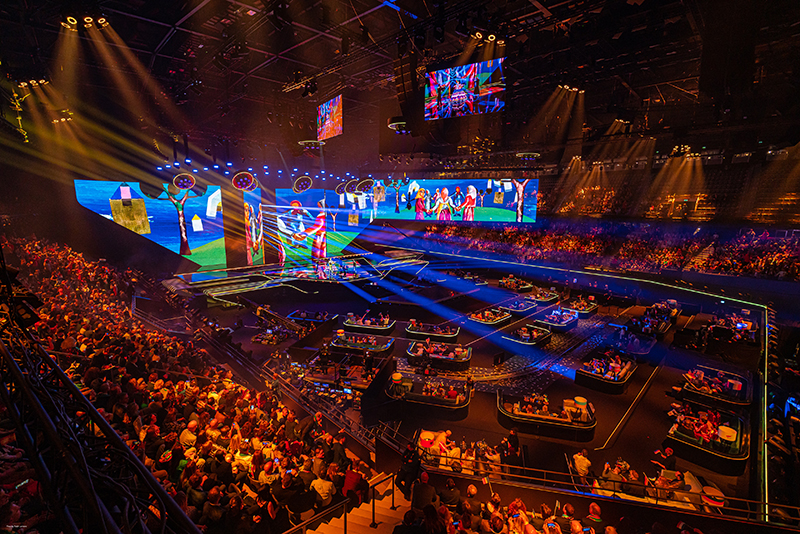
One of the world’s biggest entertainment spectacles was meticulously planned for May 12, 14 and 16 2020 when, less than two months out and for the first time in its 64-year history, it was abruptly canceled by Covid-19 on March 18. In the year that followed, the creative team hung onto the technical plans, making some additional tweaks because … well, because they could. The green light was given for a show in 2021, with precautions attached. The result was a stunning, pretty-much-flawless 65th International Eurovision Song Contest (ESC). The talent competition came roaring back to life in Rotterdam, Netherlands’ Ahoy arena May 18, 20 and 22 and was executed so well that little of the frenzy and excitement it typically exalts was lost despite some compromises. Officially, the Italian band Måneskin won, though a deep dive into what went into making the show reveals the production team is certainly in the winner’s circle too: Visually stunning, pyro laden, the largest music contest in the world was nothing short of exhilarating.
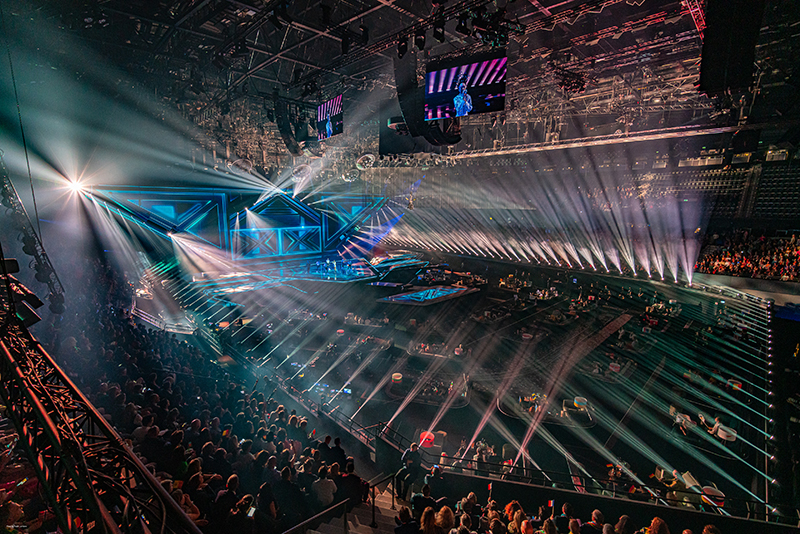
Although the 3,500 people attending each of the finals and grand finale were just a fraction of the 16,000 people who can normally attend a concert at Rotterdam’s Ahoy arena during non-pandemic times, more than 183 million people worldwide watched acts from 39 different countries. Here are some more numbers: There were around 7,000 meters of fiber cable used. There were 6,000 pyro effects, including 14 Magic FX Flameblazers, 24 Magic FX Sparxtars, eight Le Maitre Freezefog and a 25-meter (82-foot) pyrotechnical waterfall. There were 14 RoboSpot controllers in multi-device mode, 12 of them controlling a BMFL WashBeam, a BMFL Followspot LT, and a Motion-cam while the other two feature the BMFL Followspot and a motion cam. A Follow-Me remote followspot tracking system was used to drive 58 Ayrton Huracán-X fixtures and six Robe BMFL WashBeams.
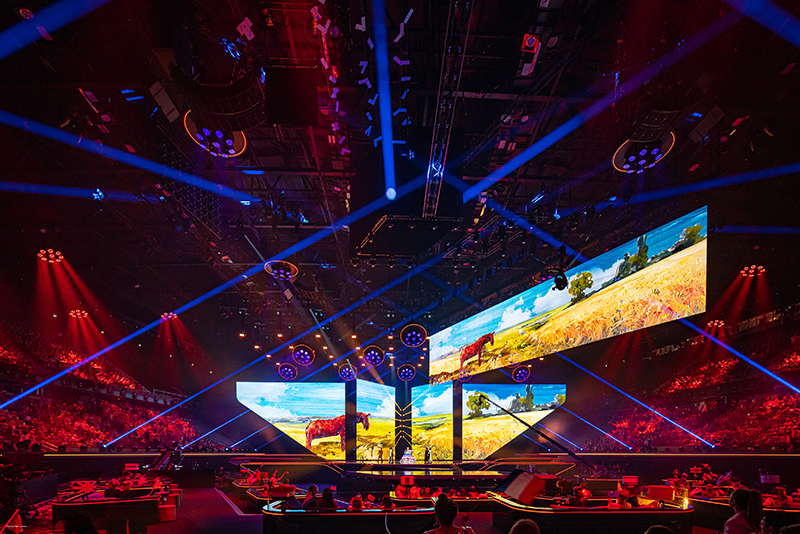
So while the team essentially designed the 2021 ESC in 2020, there was still important work to do. There needed to be adjustments of the stage positions to allow for social distancing between the performers. Places where the audience would normally stand, scream and wave flags were switched out and replaced with a stoic jury who sat quietly in judgment. Safety was a priority, and everything was thought of including a team of backup designers and operators just in case anyone got sick (no worries — not needed, thankfully).
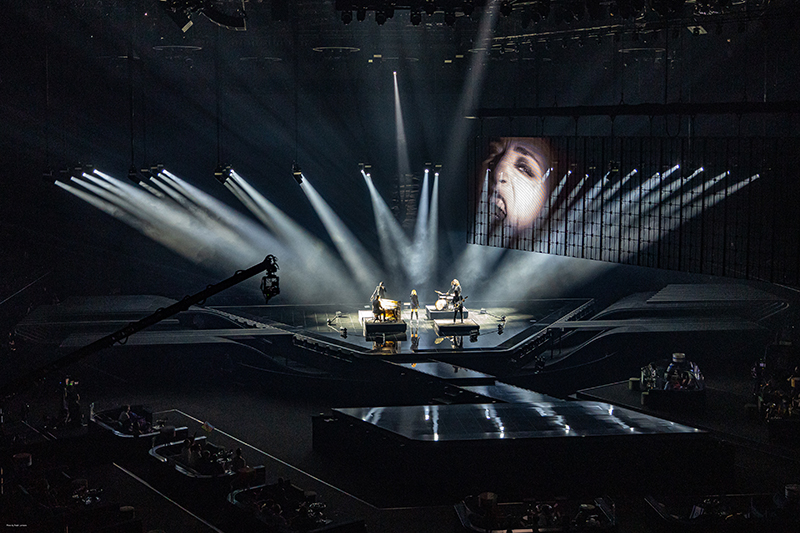
“From the start of the design process, the cooperation was wonderful between staging, lighting, set, AR, and TV creatives with open discussions and opinions freely shared,” says head of lighting design Henk-Jan van Beek. “Also, to incorporate all these ideas into one joint design plan that was perfected during the previz and production period really contributed to the show’s success.”
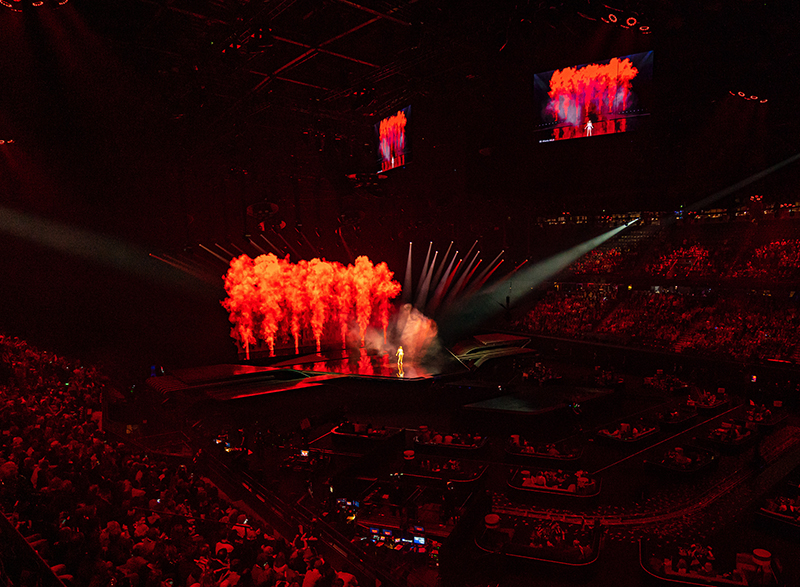
Not One Client, 39
Erwin Rintjema, head of production, took on the complex and multifaceted project, hand-picking the team to execute it all. The 20-year television industry veteran has worked on many international events including New York Fashion Week and the ABN AMRO World Tennis Tournament, but this was his first ESC. He says they consulted in-depth with previous ESC production teams, which was helpful, but “there is no ‘production Bible’ for Eurovision.” It is, by design, different every year. “Eurovision has always been big, bold, and groundbreaking, and of course we were eager to once again take the next step — but we wanted to integrate some Dutch DNA in the process,” he says. The vision was to design a set that “would not just be big and full of tech, but clean and open, with a lot of ‘hidden’ features to add to different performances.” They had LED doors in the middle, lighting fixtures on the back of the doors, and a daunting amount of motion effects. Then they had a B stage that was really a B-plus one, as it rivaled the main one in scope and included another large LED screen that dropped in and boasted AR capabilities. “We really created a big candy shop where every act could pick and choose what flavors they would like to add to their performance to make theirs as good as it can be.”

Along with 10 grandMA3 consoles at FOH and two more on the floor for focusing, the control setup included several Art-Net universes for the virtual lights working in the AR realm. The visual team also used disguise media servers to link LED screen intensity control with a cool Ambilight effect using the lights around the LED screens. Monitoring of the universes and fixtures was handled by ELC’s dmXLAN.
Rintjema was not there to serve just one client. “We had 39 participating countries, each with their own creative plans, ideas, wishes, and demands. We tried to service them and work with them to create the best possible performance. This included updating camera shots, lighting, staging, special effects, and motion effects after each rehearsal, creating huge pressure on the team and the tech systems.”
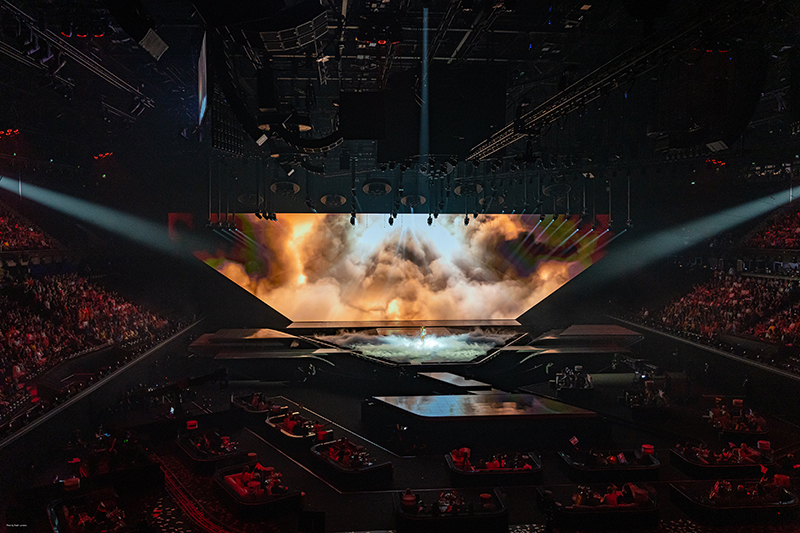
It was a walk on a tightrope, and Rintjema went in especially concerned about two aspects. “Keeping Covid outside of our production was the first priority. It’s a great show to work on and a lifelong ambition, but no show is worth risking people’s health.” Then there was the challenge of treating all performers equally “without technical hiccups that might cause problems for the performers. I am so glad that we succeeded in both.”
Rintjema gave his team a long leash. “I strongly believe that the best results are produced in a relaxed atmosphere, where the production team creates the best possible circumstances for everyone to work in. There is no need for running, screaming, and shouting — just professionalism, respect, and understanding. In my mind, that is the Dutch way of doing productions. And from the moment we started the load in, all through the production period, up until the load out, that’s the way it was, and it really worked. The crew, delegates, and press all complimented us on [our teamwork], and I believe that this is the biggest signature mark we’ve left on Eurovision 2021.”
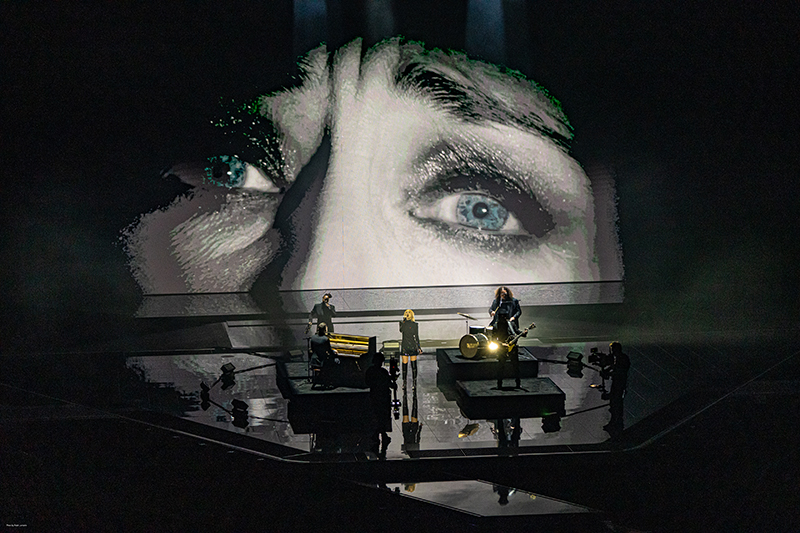
A Rarity: More Time
This was ESC number eight for Hans Cromheecke, and this time he was head of event video and media servers. For him, the biggest technical difference from previous shows was the quality and the higher resolution of today’s video products. This meant more servers were needed, making wrangling it all more complicated overall. Something new was Stage Precision software, which Cromheecke used to “help all the other departments track all necessary moving objects.” That system, still in the public beta phase, enables a tech to build complex control systems and previsualize or preprogram workflows.
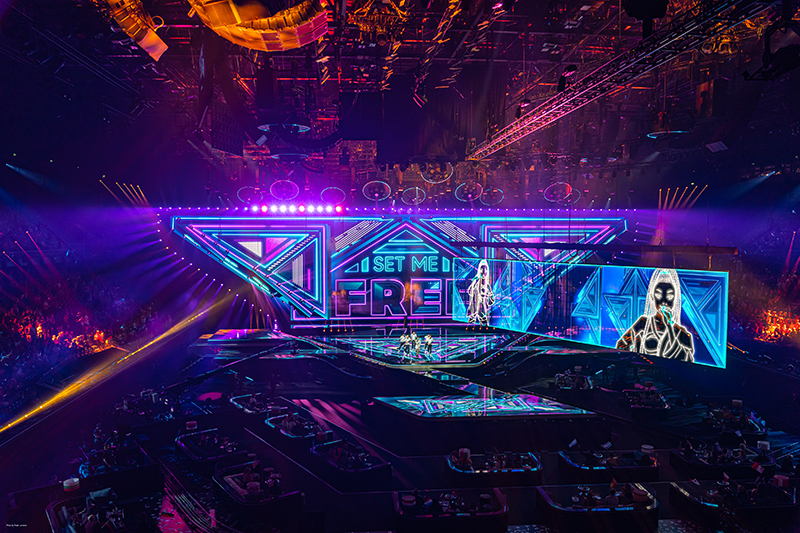
“The difference between last year and this year was that there was more time to plan it,” says Cromheecke. “All custom elements and plans were done, and with the video, we only had to integrate some extra switching for a potential virtual green room.” As it turned out, the production was able to make use of an actual green room for the artists and their delegations, reducing the need for real-time video wizardry using Notch visual effects.

Even so, there were many adjustments to make for this socially distanced production. Moving the audience out from the stage and the judges in was the biggest change for Cromheecke. He says that typically, the audience makes the show “simple” as thousands of fans crowd the stage waving flags, making it “more sexy.” Judges sitting on couches? Less so. “The directors were forced to use more inner and close shots. That we were at least able to put 3,500 people [in the arena] was an unexpected blessing.”
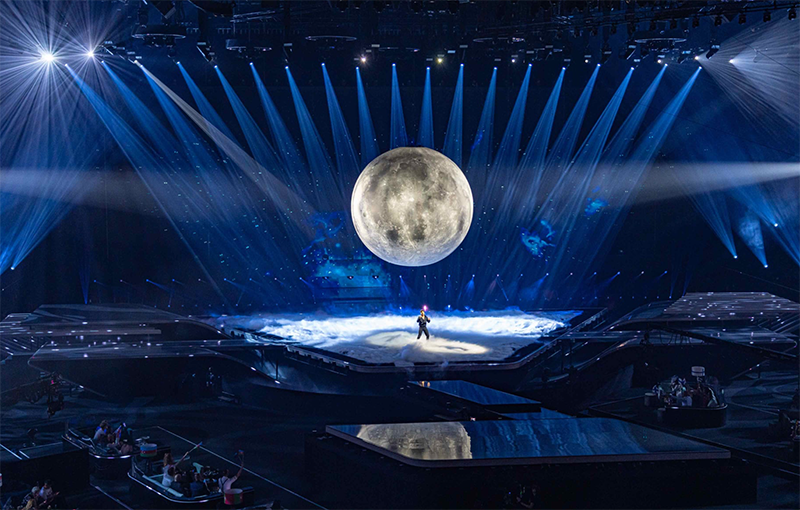
The massive video walls were leaned on even more than usual to create excitement, both in the room and for the millions of viewers at home. “We have a long relationship with ROE Visual, the market leader in LED, and they have one of the best products on the market,” Cromheecke says, of ROE Visual’s BQ4 4.6mm LED screen panels. “There’s a high level of uniformity, a very good dimming curve, and fully redundant low-latency processing.”
Cromheecke, from Belgium, says he was proud to be part of the Dutch production team. “Everybody has their own way of creating an event, and as video department manager, you need to lay out the headlines for the vendor, you need to hide the operators; but in the end it is the operator who needs to push and deliver what is requested.”
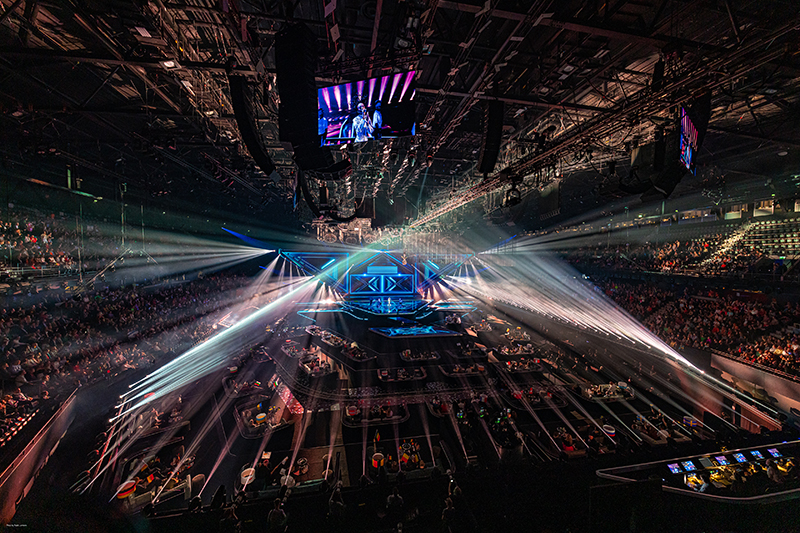
Lighting Toolbox
As for the lighting arsenal, Henk-Jan van Beek discussed some of the new tools he was able to work with, including “some great fixtures like Claypaky Xtylos and the Ayrton Huracán-X. The Xtylos was great because of the straight lines it can do, which matched the set design, and the Huracán is a true workhorse, with a powerful white LED engine with great effects [like] gobo wheels, colors, and blades. We also needed the power of both tools to match the output of the LED wall.” Van Beek and team also employed a lot of Robe products including LEDBeam 150s and Spiiders. The LEDBeam’s compact size and powerful output helped achieve the clean look of the set, van Beek says. “The Spiider was placed in special pods of nine and were wonderful for output, color, and zoom-range,” he adds. “They were especially advantageous to be able to use the separately controlled LED-engines with combined parameters.”
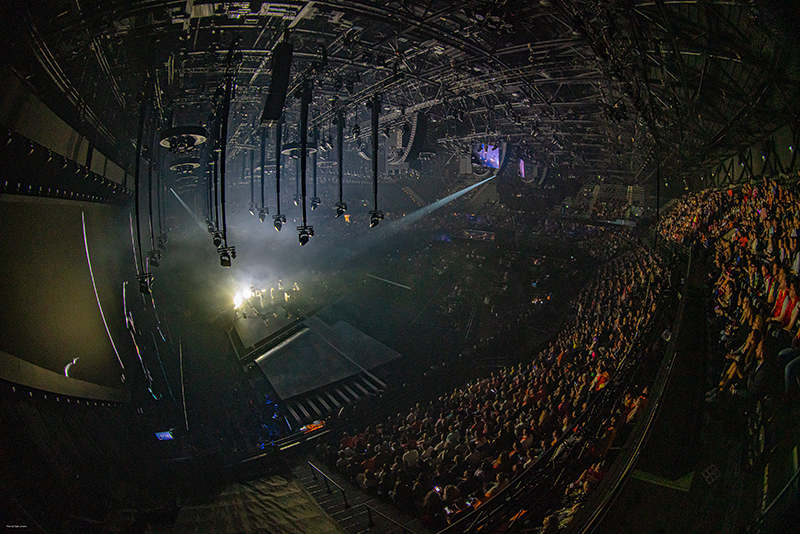
Van Beek also spoke of the pressure to make the right choices in combining lighting with all the other visual elements for all acts equally. “Flexibility and cooperation between all creatives including AR, video content, set design, etc., was great. We always kept the interest of our overall design in mind and, of course, striving to support the delegations so they could make their act as best as possible.” Otherwise, as always with broadcast shows like this, balancing between video and lighting is tricky. “We had good control over the quantity of lighting output of the LED wall and floor, and so we made sure to keep the same color temperature balance between lighting and video,” van Beek says. “The white and level balances of video, front lights, and follow spots needed to match exactly.” The production included a separate lighting operator whose main role was to set and maintain the right balances to optimize the visuals for TV viewers.
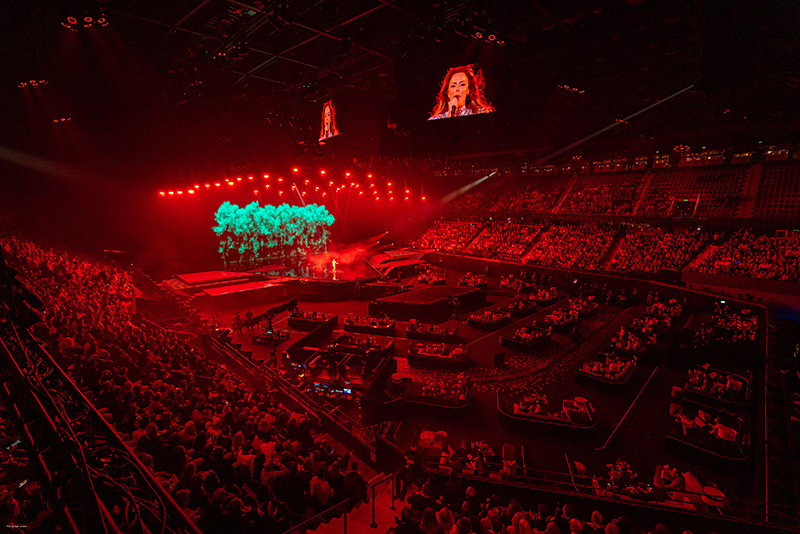
“We are all proud of the amazing set and design we created, and all elements in the show from the choice of fixtures, to employing lots of motion elements led to a dynamic design,” van Beek adds. “My wonderful lighting team did an amazing job working with the variety of acts, and we’re glad that individuals had experience in TV, rock ‘n’ roll, EDM, and theater allowed for the variety of acts we served get what they needed. This passion and enthusiasm of my crew made the difference.”
“I am so proud of the team and the whole approach we took,” Rintjema says. “From the moment we started this adventure, our mission was clear, and that was to get everybody on board working together. Because of that we’ve created the best possible circumstances, even whilst in the middle of a global pandemic.”
